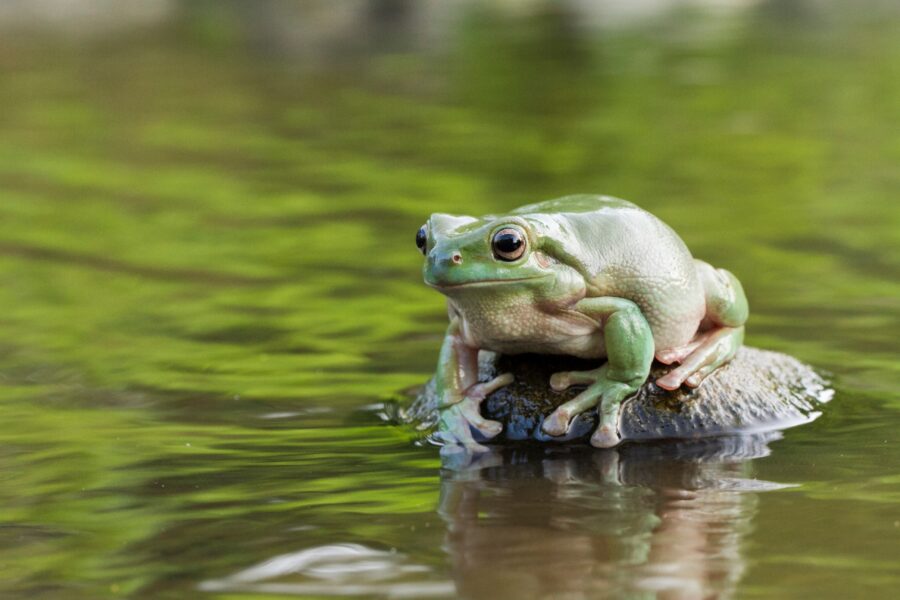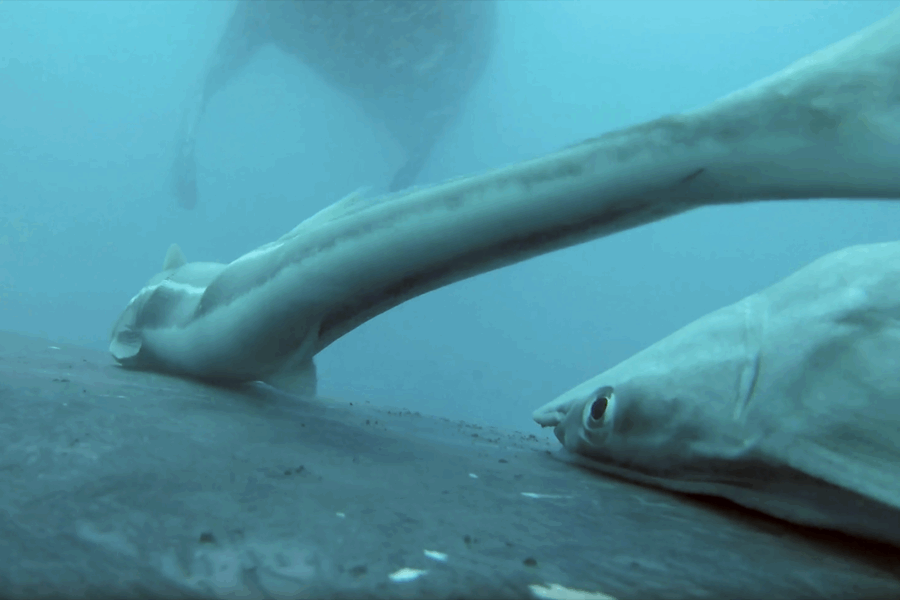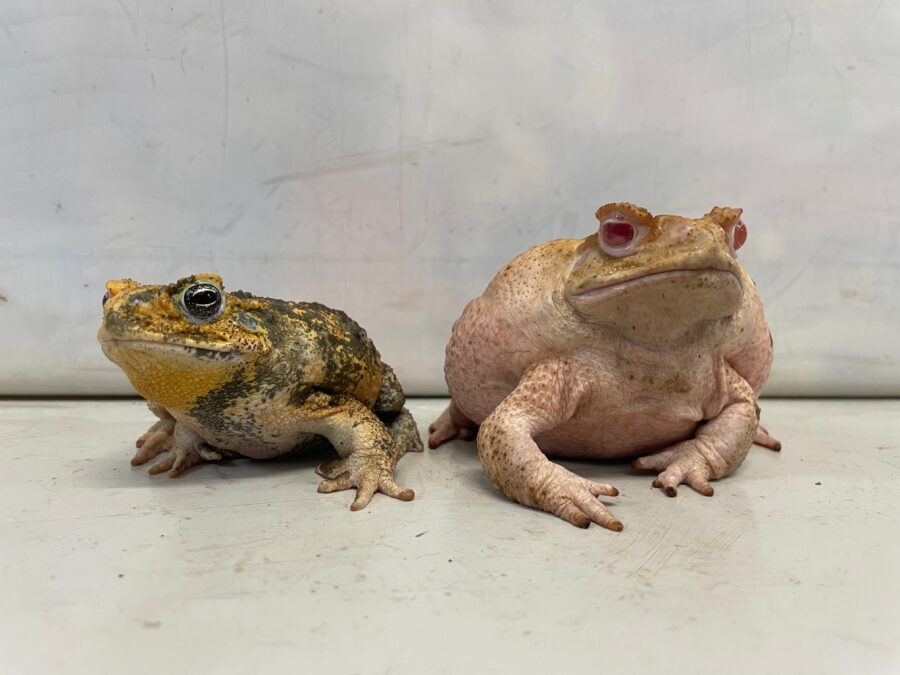Genetically pure dingoes face extinction

LAUNCH A GALLERY OF FRASER ISLAND DINGO IMAGES
DINGOES ARE OFTEN IN headlines for all the wrong reasons – agressive behaviour to tourists, culls by national park authorities – but behind the scenes, conservationists hold concerns that dingoes may be interbred into extinction.
Fears for the dingo’s future are proliferating. The International Union for the Conservation of Nature (IUCN) upgraded the dingo’s conservation status to vulnerable in 2004 and dingo experts such as Dr Ricky Spencer from the University of Western Sydney, have predicted Australia’s native canine will go extinct within the next twenty years.
Hybridisation with domestic doges is their greatest threat. Dingoes and domestic dogs, both subspecies of Canis lupus, can interbreed with ease and this has led to a massive influx of domestic dog genes into the dingo gene pool.
In many places around Australia – some experts say most – dingoes have been almost totally replaced by dog-dingo hybrids. “Nowhere on the east coast of Australia,” says Ricky, “can you find a dingo population that isn’t at least fifty per cent, and in some cases eighty percent, domestic dog”.
Even those animals that appear to be dingoes are often now, in reality, mostly domestic dogs. “The only way to tell for sure,” says Dr Guy Ballard, a dingo researcher with the NSW government’s vertebrate pest unit, “is by analysing their skulls, or taking DNA samples”.

Dingo from the Fraser Island population
Mixed genetics, mixed problems
But it’s not just their white socks that are changing though. One recent study found that average dingo weight and size has risen by 20 per cent over the past two decades, probably because of hybridisation.
This change could alter the way dingoes hunt, allowing them to attack livestock and wildlife they’ve previously found an unmanageable size.
Behavioural changes also cause ecological problems. There is some evidence, for instance, that the dingo breeding season has grown longer under the influence of domestic dog genes; dogs breed twice a year, in contrast to the dingo’s single season. This might be one reason for the explosion in dingo and wild dog numbers across the country.
Another might be the breakdown in the pack structure of dingo societies. In the wild, dingo packs sometimes centre around a breeding alpha pair which suppress the breeding of subordinate members – a possible natural population control measure. Domestic dogs, however, seem to form larger packs with uncontrolled breeding, again possibly contributing to the current population explosion.
Saving the purebred dingo
This inexorable tide of hybridisation has lent new urgency to the question of how best to save the dingo. Most experts are pessimistic about the chances of preventing interbreeding, pointing out that contact between dog and dingo populations is only going to increase.
Some proponents advocate the establishment of refuges where remnant populations of pure dingoes could be maintained. The best known of these is Fraser Island, where the Great Sandy National Park protects what is regarded as the purest population of dingoes left in Australia. However, the culling of problem dingoes on the popular tourist island has led to fears that the dingo population there is now too small to be genetically viable.
Such concerns have led some conservationists to opt for a different strategy: establishing their own private breeding refuges on the mainland instead. One such is the Australian Dingo Conservation Association’s (ADCA) 92 ha compound at Colong station in the Blue Mountains National Park.
There the ADCA maintains a breeding population of 31 purebred dingoes. “We try hard to maintain that genetic purity,” says ADCA vice-president Gavan McDowell. “We even separate our breeding packs into sub-types, like mountain, desert and tropical dingoes.” The association’s ultimate aim is to breed a number of pure dingoes that can be released into the wild to recolonise areas cleared of feral dogs.
Silver lining
Other researchers, like Guy, are more optimistic of the dingo’s plight. His research includes several field projects looking at dingo purity around Australia. While Guy acknowledges that hybridisation is a major threat, he says that wherever his group tests dingoes, even in heavily hybridised areas of NSW, they still find good numbers of purebred dingoes.
“People often don’t realise that the environmental factors that lead to large numbers of hybrids also mean large numbers of pure dingoes,” Guy says. “It’s impossible to prove, but I suspect there are actually more purebred dingoes around today than at any other time in history.”
Best of all, says Guy, is the fact that his team has identified several hotspots where pure dingo numbers are consistently high. One is the Tanami Desert, where the dingo population is 90 per cent pure, apparently due to the area’s remoteness. Two others, however, lie on the heavily settled NSW coast: at Myall Lakes National Park and Limeburners Creek Nature Reserve.
Quirks of geography – Limeburners Creek is on a peninsula, and Myall Lakes is connected by green belts to the wilder lands out to Sydney’s west – have apparently allowed both areas to sustain populations of pure dingoes, despite their proximity to settled areas with large populations of domestic dogs.
Guy also believes that with careful management – such as continual DNA tests to identify and euthanise hybridised dogs – the populations at Limeburners Creek and Myall Lakes can maintain their purity for some time to come. “Dingoes have survived two hundred years of interbreeding already,” he says. “I don’t see why, with a little help, they can’t survive for another two hundred.”
Peter McAllister is a science writer and anthropologist from Griffith University.




